Research News
November 15, 2016
Fall All-Hands Meeting Looks to the Future
iUTAH held its third All-Hands meeting of the year on Friday, November 4, 2016, at the Courtyard Marriott in Provo, UT. The conference attracted nearly 70 participants who came together to discuss the “Focus on Facilities” theme, in hopes of inspiring initiatives and grant writing opportunities for research, training, education, and outreach as we move into iUTAH 2.0. Participants at the meeting shared their progress as our facilities were highlighted as catalysts for the next generation of iUTAH collaborative, multi-institutional, interdisciplinary research.
The opening welcome and conference overview was given by iUTAH Project Director Michelle Baker where she reviewed project goals and strategies for sustainability of the program. She also introduced GAMUT, GIRF, Visualization Lab (iVL), and Cyberinfrastructure as facilities that would be explored in more detail throughout the day.
Presenters at the meeting included Jeff Horsburgh, Taya Carothers, Amber Jones, Dave Eiriksson, Christine Pomeroy, Pratibha Sapkota, Martin Buchert, and Melissa Haeffner, all with iUTAH. Students Tony Melcher, Utah State University, and Treven Edwards, University of Utah, presented on research they had done with iUTAH Mentors. The final presentation of the day given by Laura Hanson of the Jordan River Commission, and was titled “How an Inventory of Open Space along the Jordan River Corridor is Assisting Regional Land Use, Conservation, and Natural Resource Management Planning.” It highlighted the successful collaboration between her organization and the iVL group in the development of models.
“The meeting was a wonderful example of people having moved past the point of getting to know each other,” said University of Utah professor and State Program Director of EPSCoR Paul Brooks. “Now it was almost difficult to get through the program because there were so many just incredibly important, engaging conversations about the future, about accomplishments, about look what we’ve done, and looking to what we could do.”
In addition to presentations, participants also had ample opportunity to connect in networking sessions with other collaborators from across the state. Some presentations can be found on our website in pdf form:
Cyberinfrastructure and HydroShare
—Dr. Jeffery Horsburgh, iUTAH Cyberinfrastructure Co-lead, Utah State University
GAMUT: The Final Frontier
—Amber Jones, iUTAH Data Manager, Utah State University
Research Activities and Opportunities at the iUTAH Green Infrastructure Research Facility (GIRF)
—Dr. Christine Pomeroy, iUTAH RFA2 Co-lead, University of Utah
The 2017 iUTAH Spring All-Hands Meeting will take place on Friday, March 31, 2017 at the University of Utah in Salt Lake City, UT, as part of a larger Broader Impacts in Research Conference hosted in partnership with the Office of the Vice President for Research at the University of Utah.
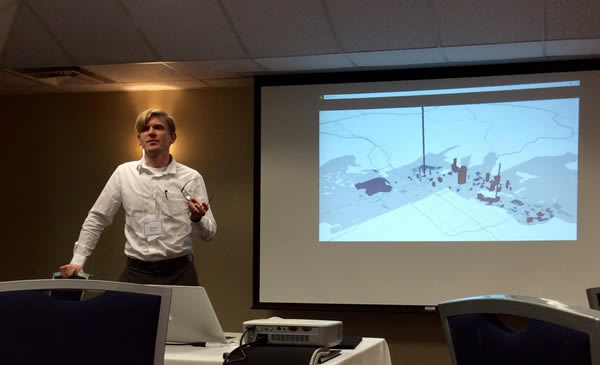
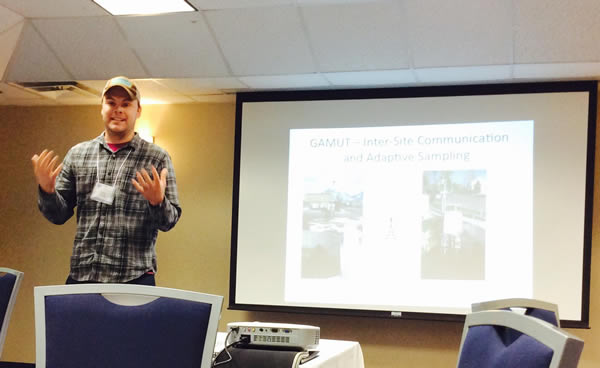
November 8, 2016
Computer Model Tracking Precipitation Makes The News
University of Utah and iUTAH researcher Court Strong was recently featured in the news. Fox 13 News recently revisited a report prepared for Governor Huntsman a decade ago that made some predictions about warming in Utah.
An excerpt from the TV news story said that “a third prediction in the report was that more precipitation would fall as rain instead of snow. Dr. Court Strong, a professor at the University of Utah, uses high-tech computer models to track precipitation. ‘At some of the lower elevations we do see a decline in the snowpack,’ he said. His research indicates we are still in the beginning stages of this transition. But because of warming, less precipitation comes as snow. Once it's on the ground, the snow that does fall melts earlier and faster.”
Revisiting each prediction showed that the decade-old report has come true as Utah continues to see bigger storms, warmer temperatures, less snow, and compromised water quality that will continue.
Press: Fox 13 News
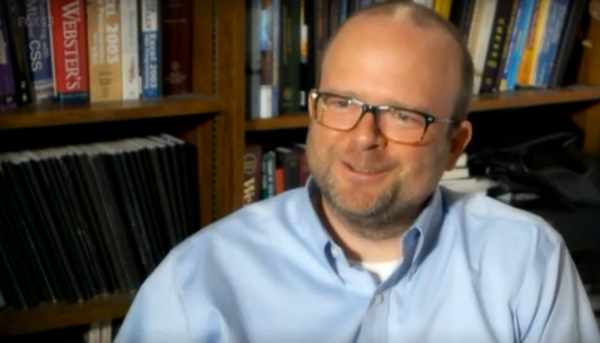
November 2, 2016
iUTAH Researchers Publish Urban Typology Paper
In a recently published paper in the online journal, Cities and the Environment, iUTAH researchers examined the development of a multi-dimensional classification scheme that identifies distinct configurations of ‘urban forms’ in Northern Utah. The intent of the paper is to advance or answer the following research questions:
i. What measurable attributes of urban neighborhoods have been linked in the scientific literature to a range of water outcomes (demand, quality, and ecohydrology)?
ii. To what extent do urban neighborhoods reflect distinctive combinations of these measurable attributes?
iii. Are urban neighborhood types systematically associated with resident water attitudes and behaviors?
iv. How can a formal typology of urban neighborhoods be used to guide the scientific study and practical management of urban water systems?
While the examples and classifications are regional, the paper is directed at a methodology that relies on publically available data and can be used in other urban areas. Authors of the article include Douglas B. Jackson-Smith, Philip A. Stoker, Martin Buchert, Joanna Endter-Wada, Carlos V. Licon, Molly S. Cannon, Shujuan Li, Zack Bjerregaard, and Luke Bell.
The article can be viewed in its entirety under the title Differentiating Urban Forms: A Neighborhood Typology for Understanding Urban Water Systems.

October 27, 2016
New Publication Maps Salt Lake's Tap Water
iUTAH researchers Yusuf Jameel, a University of Utah graduate student, Geology and Geophysics professor Gabriel Bowen, and James Ehleringer, distinguished professor of biology, and colleagues sampled tap water throughout the Salt Lake Valley to see if stable isotopes of oxygen and hydrogen in the water could be used to study the various sources of water for the valley’s more than one million residents. The results of this study have been published in Water Resources Research.
A media release provided by the University of Utah’s science writer Paul Gabrielsen said, “The team found strong spatial patterns within the more than 800 tap water samples, indicative of how different sources of water are used in different parts of the valley. Isotopic signatures emphasized the importance of mountain snow to the valley’s water supply. The isotope signatures varied by season, reflecting the contribution of surface water. The team’s results show that isotopes of tap water can be used to study how water is used over a large urban area, offering new tools for effective management of a precious and limited resource.
As Utah’s population continues to grow, water managers and water scientists are looking more at water’s journey to our taps. Drinking water can come from a variety of sources, including lakes, streams and groundwater. Of those sources, mountain snow and spring runoff also play a significant role.”
Journal Reference: Water Resources Research
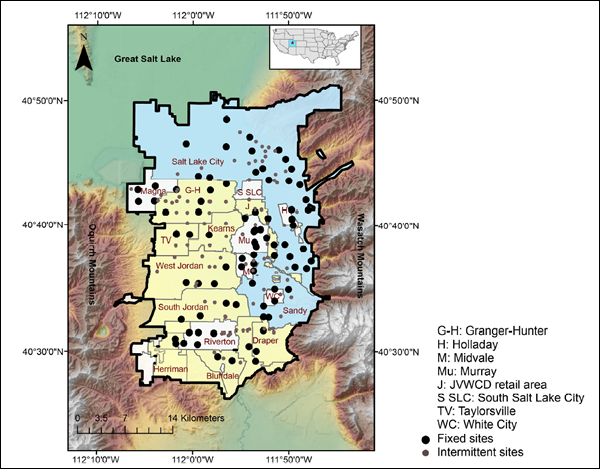
September 27, 2016
Comments Sought on Draft Utah Water Strategy
A draft of the state water strategy has been released to the public. When finalized, it will propose a 50-year water strategy to the governor’s office. This document, written by the State Water Strategy Advisory team’s chair, is now open for review and comment. Visit the Salt Lake Tribute article for an overview of the process to date.
iUTAH collaborator Joanna Endter-Wada, Professor of Natural Resource Policy and Social Science, participated on the team tasked with providing analysis and feedback. Other members of the team included water managers, climatologists, university researchers, elected officials, environmental activists, and others. Public comments are needed for the work facilitated by Envision Utah.
Please share this information through conversations, email, and social media. We encourage you to respond and make your voice heard. Comments can be submitted to Envision Utah’s website until Monday, October 24, 2016.
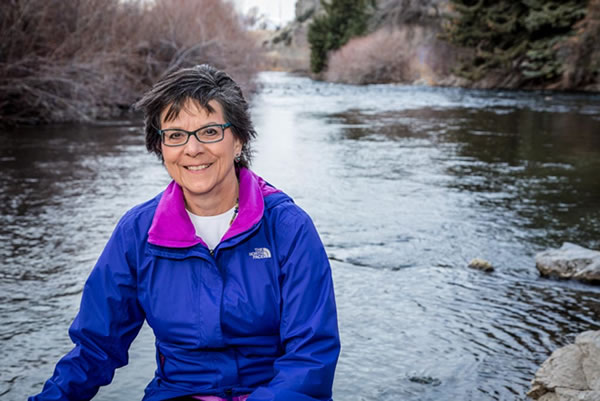
feedback on the draft Utah water strategy


